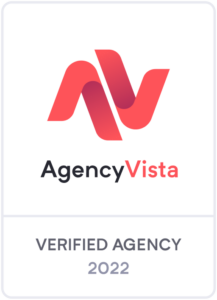This article describes how you can build an automated, account based marketing system. It’s similar to a process we use at Fluidic to generate leads for our clients. Read on to discover how you can implement it and start generating high quality sales opportunities for yourself.
But first some pre-requisites. We serve a lot of businesses in the medical and healthcare niche and this system isn’t for everyone. That said, if you are:
- Selling a B2B medical or healthcare related product or service
- Have achieved product-market fit and are confident in the solution you offer
- Your target market is a reasonable size, usually on a national or global scale
Then this solution will enable you to generate warm leads at scale! If your primary market is different (patients or HCPS) or you are a locally based business then this isn’t for you. That doesn’t mean that we can’t help, contact us to find out how we can assist you instead.
Caveat Lector (Reader Beware)
It takes hard work and diligence to implement this system and keep it running — but I assure you that it’s totally worth it. Let’s do some maths to see why:
Let say you sell a healthcare SAAS product to hospitals for $1,500 per month and you are on contact for 36 months.
Your customers Lifetime Value (LTV) is:
$1,500 × 12 × 3 = $54,000
Now, lets suppose that you have a Close Rate (CR) of 1 in 5 leads who convert to customers. A close rate of 20% is nothing amazing, but it’s good enough for our demonstration.
If this is the case then your Lead Value (LV) is:
$54,000 (LTV) × 20% (CR) = $10,800 (LV)
This means that each lead is worth just over $10k — that’s a valuable lead. So, let’s say you could generate 5 of those in a month — would you be up for it?
In other words, what is a prospecting system capable of generating $54,000 a month or $ 648,000 per year worth to you?
As you can see, putting in the time and effort is going to be a worthwhile investment if you have the right product and target market.
Step 1: Build your prospect list
Search on LinkedIn
The very first thing you should do is us a combination of tools such as LinkedIn Sales Navigator and Dux-Soup to build a csv file. A word of warning on this, using automation tools on LinkedIn is against their terms of service so proceed with caution and don’t be greedy! Better to go slow and fly under the radar than be kicked off the platform.
To prepare for this stage develop search criteria matched to your customer avatars/profiles and aim for a sample size of around 500–1,000. You can go higher, but there are manual steps involved in this process, so try not to overwhelm yourself to begin with!
Gather extra info
You’ll end up with a ton of fields, but the ones we care about are first name, last name, and company name. The LinkedIn URL is also important, if you need to figure that out use a tool like Phantom Buster in order to do so.
Next up you need to use an external tool to find the corresponding email addresses. Start with FindThatLead and then find any that remain manually using Seamless.AI or ContactOut.
Personalise
Finally create a personalisation field in your spreadsheet. Now, remember the manual steps I mentioned earlier? This is it baby!
Work your way through your spreadsheet and diligently research each prospect, creating a sentence that is individual to them. Focus on their work, their experience, background and company. Say something short, succinct and complimentarily.
This personalised content will come in useful when you start reaching out to people. It literally demonstrates that you care enough to have done your homework and has a HUGE impact on your success.
So although it’s a time consuming process, keep you head down and continue reminding yourself that nothing good ever comes easy!
When you’re done you should have a nice clean spreadsheet of between 500–1,000 ice cold leads including their:
- First name
- Last name
- Company
- Email address
- LinkedIn URL
- Personalisation field
As soon as you can tick those 6 off the list, congratulations — you’re ready to move on to step number 2!
Step 2: LinkedIn Prospecting
Optimise your profile
Whatever you do, do NOT skip this step! In fact, if you must, hire a really good copywriter (or us) to help you out. Why? Because on LinkedIn your profile page is like your website (and you do have that optimised for conversions, right)?
Because the first stage of the prospecting occurs on LinkedIn, people are going to visit your profile and when they do, you want to make those seconds count. Optimise everything about your profile and make sure it’s a gleaming reflection of your brand!
- Picture: Remember your profile image appears all over the network, but it’s usually pretty small in size, so don’t make it a full body shot! Use a clean, professional and friendly looking headshot. Most smartphones these days have a decent portrait mode so don something smart and have somebody take some pics against a blank wall or distant background.
- Background Photo: Please, for the love of all that is good and holy, do something to your background (header) image. So many people neglect it, but it’s a great opportunity to communicate your brand values visually. It can be difficult to get right because it appears at different size and ratios across the platform (and the position of your profile image overlay changes). At the time of writing recommended dimensions are 1584 pixels wide by 396 pixels tall so get creative and spend some time playing around to get the best outcome.
- Headline: Again, your profile headline appears all over the place, so this is not the place for your job title, despite most peoples insistence on doing so. Your profile headline is valuable real estate, so don’t make it about you, make it what you do for others and how you can help. It’s your elevator pitch in one line.
- Summary: If you implement this system, people are going to visit your profile, and this is your chance to really shine. Your profile summary is like a landing page, so make it count! This is a basic framework that you can use:
- Callout your target audience
- Agitate their pain points
- Demonstrate empathy and authority
- Introduce your business, products, solutions
- Pre-qualify who you will work with

Once you’re done with these three steps you’ll have an amazing looking profile page, like mine which you can see in the image above, or check out in it’s entirety here.
Run your campaign
Use an automation tool like Dux-Soup or LeadConnect to run a 2-stage campaign:
Stage 1: Visit Prospects
Nothing fancy about this part, just set your tool up to visit prospects from your list automatically. You’ll usually find this earns you some visits to your profile in return because people are naturally curious. Aren’t you glad that you put the work in to optimise your profile now!?
Stage 2: Visit and Connect
Next up set your automation software to revisit everyone and this time send a connection request. Personalise your intro message using the fields you created earlier so they are not just generic. Personally I rarely connect with people who reach out without explaining why they would like to be a part of my network. You should do the same, because LinkedIns algorithms are optimised for relevance, so being connected to all and sundry reduces the relevance of your activities to your audience and affects your visibility and impact.
Most importantly for this stage, don’t pitch anyone. Some of your new connections are going to check out your profile (possibly for a second time) and respond to you favourably. These are hot leads, tag them in your spreadsheet so you don’t interact via future automation and jump on a call with them, or send them your calendar booking invite and arrange a Zoom.
At this stage you will have people who are connected and know you, and those who are not connected but probably noticed you sniffing around their profiles. Common sense says that you may as well just straight pitch people who haven’t connected yet, you have nothing to loose after all. We’ll also start nurturing those who you have connected with as part of the same campaign, which brings us to Step 3.
Step 3: Cold email nurturing
If you’re new to cold email outreach best practice dictates that you should set up email address for these activities using a separate domain. This is so you don’t start getting your main domain marked as spam. This should’t happen anyway if your communications and product are the right fit for your prospects, but it’s not worth the risk. You have a few options:
- Purchase a new, similar domain. E.g. getmysaas.com
- Use a different Top Level Domain (TLD) e.g. mysaas.co
- Use a subdomain of your main domain (get.mysaas.com)
Now once that’s done you’ll want to warm up your new email address over a period of 3–4 weeks in order to build a good sending reputation. Start by sending around 2 messages a day and grow this to 40–50 emails per day over the period.
The rest of the process is fairly academic. You’re going to create an email follow up/nurture sequence of about 6–7 messages with amazing sales copy and strong CTA’s. Again, at this stage is is 100% worth hiring an amazing copywriter or asking an agency for help if you don’t have the skills to craft high converting copy in-house.
It should go without saying (but I will anyway), that preparing your domain, email and crafting your messages should be done in advance, at the same time you’re building out your prospect list. This way, a week or so after your LinkedIn activities end, you can unleash the email campaign to your prospect list whilst you and your business are still relatively fresh in their minds.
Some rules to follow if you want to get the best results from Step 3 include:
- Use automation software to send your emails and include personalisation.
- Create seperate sequences if you have more than one customer profile that you’re targeting.
- Split test subject lines to improve open rates and performance.
- Marketing 101 — don’t send any emails without CTAs!
- Bonus Points: Get hyper personalised using a tool like Uclic which generates individually customised images at scale (also works well on LinkedIn).
And remember, at all stages throughout this process your aim is to solicit a response and not a sale. So be nice, be normal and be helpful and you’ll find a lot of success using this system. There are a lot of moving parts to this entire process, so using good project management software can be really helpful. And it does take time, you certainly can’t just flip a switch and have this running overnight. But on the flip side the payoff is immense if you get it right!
If you think this sounds like it would work well for your business, but you’re too busy looking after operations and keeping customers happy and would like help implementing this system please contact us. Our prices start at about $5k a month, or less if you’re an established business interested in a hybrid pay-per-lead model.










